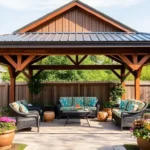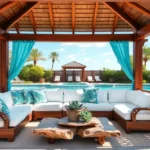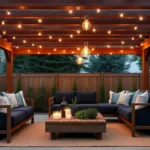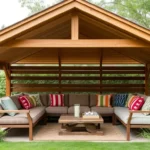Embracing the outdoors need not be limited by the whims of weather. For both novice and seasoned homeowners, creating a covered patio is a transformative step that allows you to enjoy your outdoor space even when the skies turn gray. A well-designed shelter not only protects from the rain but also enhances the beauty and functionality of your patio, making it a cherished retreat year-round.
In this article, you’ll discover 15 inspiring covered patio designs that cater to varying tastes and needs, ensuring your outdoor haven remains inviting, regardless of the forecast. From elegant pergolas to modern retractable awnings, each design offers practical solutions and creative ideas to elevate your outdoor living experience. Whether you’re starting from scratch or enhancing an existing space, these designs will provide the insight and inspiration needed to make your patio a true extension of your home.
Choosing Durable Patio Covers
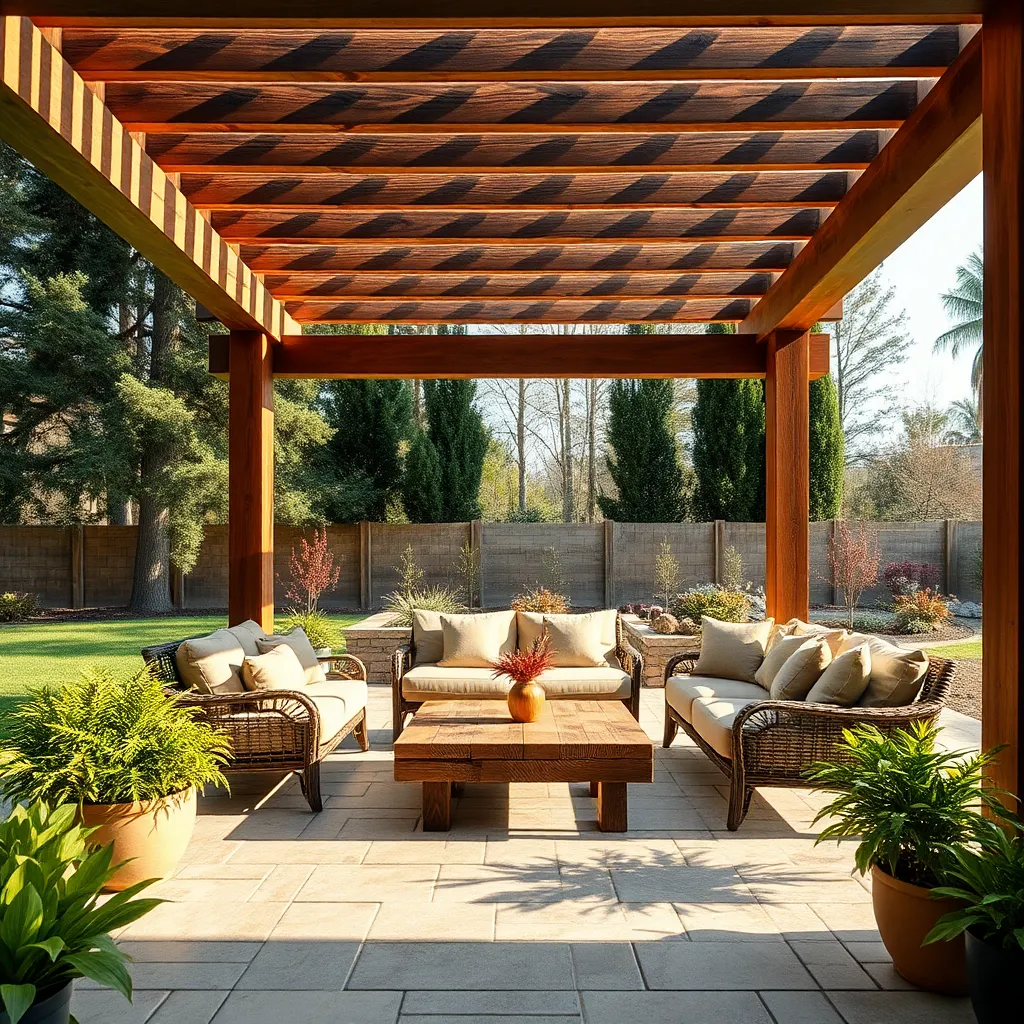
When selecting a patio cover, consider materials that offer both durability and aesthetic appeal. Opt for sturdy options like aluminum, wood, or polycarbonate, which provide excellent protection against the elements. Aluminum is low-maintenance and rust-resistant, while wood offers a warm, natural look that can be stained or painted to match your outdoor decor. For those seeking a modern touch, polycarbonate panels are lightweight and can filter UV rays without blocking natural light.
Design plays a crucial role in ensuring your patio cover complements your home’s style while offering effective shelter. Adjustable louvered roofs are an advanced option, allowing you to control the amount of sunlight and ventilation. Beginners might prefer simpler structures like a gable or flat roof, which are easier to construct and can be enhanced with decorative elements like outdoor string lights or hanging plants. For larger patios, ensure the cover spans at least 12 feet to provide ample protection from rain. Whichever design you choose, make sure it harmonizes with your existing landscape for a cohesive look.
Incorporating Transparent Roof Panels
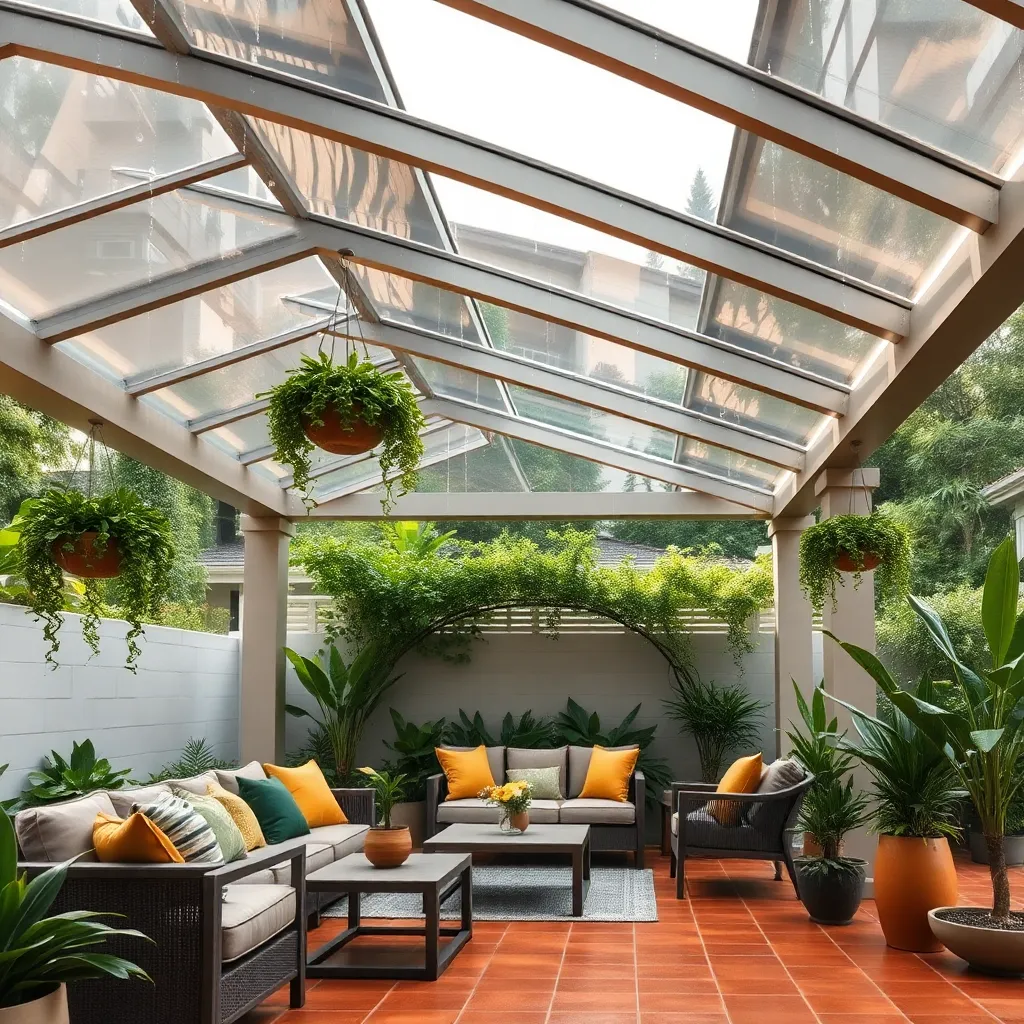
Incorporating transparent roof panels into your patio design can transform your outdoor space by allowing natural light to filter through while still providing protection from rain. Polycarbonate and acrylic panels are popular choices due to their durability and high light transmission. For a seamless integration, opt for panels with UV protection to prevent yellowing and ensure longevity. Beginners can start with a simple flat-panel installation, while more experienced DIYers might explore angled or vaulted designs to enhance visual appeal.
To maximize the benefits of transparent roof panels, consider combining them with a sturdy frame made from weather-resistant materials like treated wood or aluminum. Ensure proper sealing along the edges to prevent water ingress, focusing on overlaps and joints. Advanced enthusiasts might experiment with incorporating adjustable panels or louvered sections to control sunlight and ventilation effectively. These features not only improve functionality but also add a sophisticated touch to your outdoor shelter, making your patio a versatile space in any weather.
Designing With Retractable Awnings

Retractable awnings offer a versatile solution for creating a covered patio that can adapt to changing weather conditions. Choose durable, weather-resistant materials like acrylic-coated fabrics or polyester to ensure long-lasting protection from rain. When designing your awning, consider a motorized system for easy operation and convenience, which can be especially beneficial in regions with unpredictable weather patterns. For beginners, a basic manual retractable awning is a cost-effective option that offers flexibility without the need for electricity.
For a more advanced setup, integrate your retractable awning with smart home systems to automate the opening and closing based on weather forecasts. Consider installation angles and dimensions—ideally, the awning should extend at least half the width of your patio to provide adequate coverage. Ensure the frame is constructed from rust-resistant materials like aluminum or powder-coated steel to withstand outdoor elements. Adding side panels or curtains can enhance functionality by providing additional protection from wind and sideways rain, creating a comfortable outdoor retreat regardless of the weather.
Utilizing Pergolas With Rain Curtains
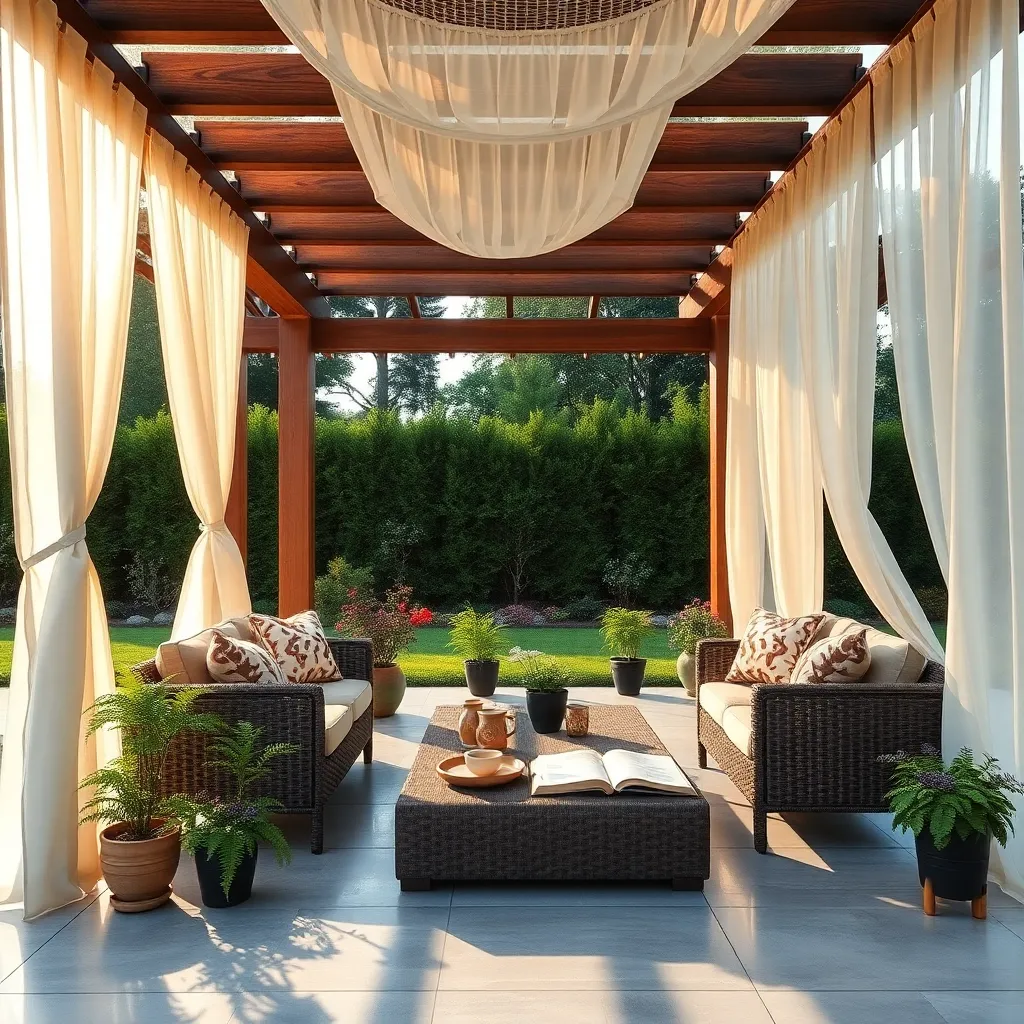
Embracing the versatility of pergolas with rain curtains can transform your patio into a year-round haven. Start by selecting durable materials such as treated wood or aluminum for the pergola structure, ensuring it withstands various weather conditions. Install rain curtains made of waterproof, UV-resistant fabric that can be easily rolled up or down depending on the forecast. This setup provides a flexible solution that keeps rain out while allowing light in, enhancing the overall ambiance of your outdoor space.
For those looking to add a personal touch, consider incorporating decorative elements like hanging plants or fairy lights along the pergola’s beams. When selecting rain curtains, opt for clear or lightly tinted options to maintain visibility and natural light while protecting against the elements. Advanced gardeners might explore automated systems that adjust the curtains based on weather sensors, offering convenience and additional protection. This blend of functionality and style ensures your pergola remains an inviting retreat, rain or shine.
Adding Skylights for Natural Light
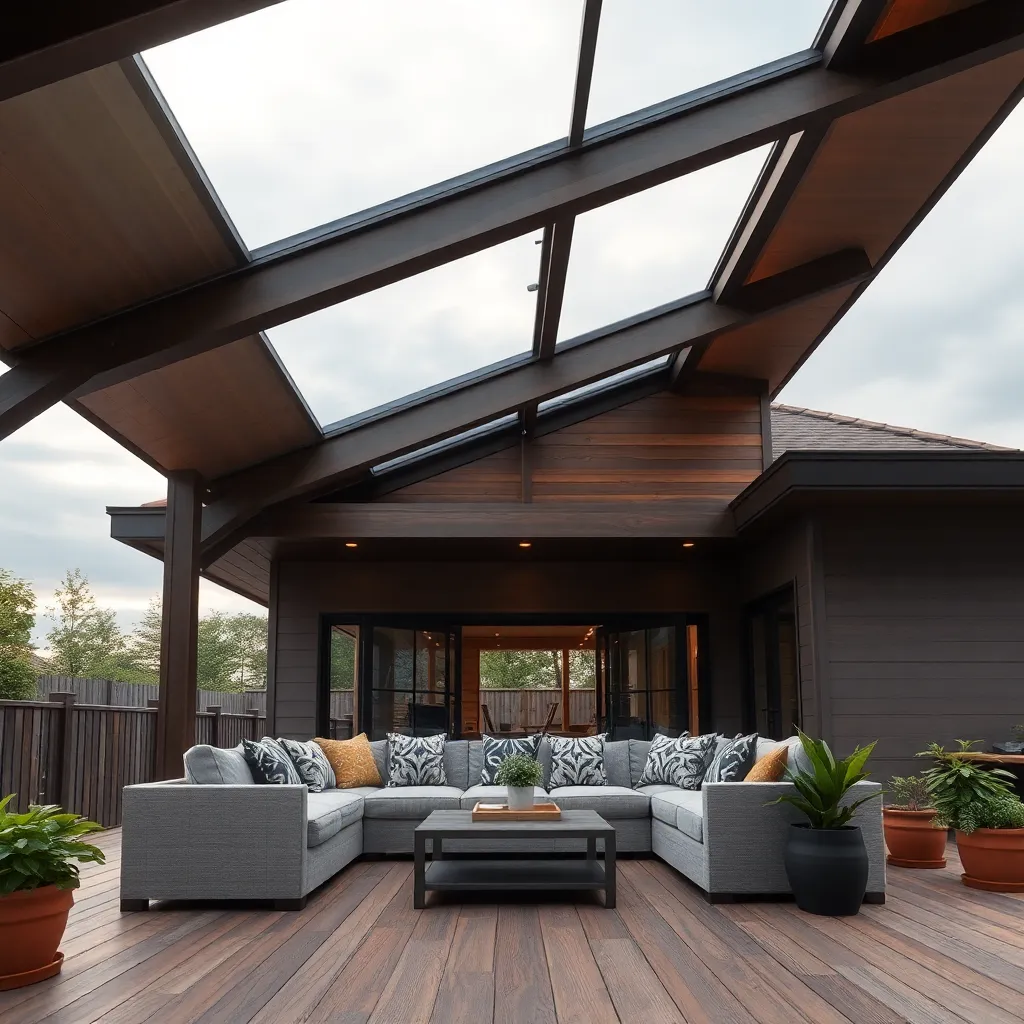
Incorporating skylights into your patio cover is an excellent way to invite natural light while keeping the rain at bay. Opt for durable materials like polycarbonate or tempered glass, which are both weather-resistant and long-lasting. Consider strategically placing skylights where they will capture the most sunlight throughout the day, enhancing the ambiance of your patio without increasing your energy bills.
For a seamless design, ensure the skylights are integrated into the existing roof structure, maintaining both aesthetics and functionality. Beginners might start with prefabricated skylight kits that offer easy installation, while more experienced DIYers could explore custom skylight shapes and sizes for a unique touch. Proper sealing is crucial to prevent leaks; use high-quality silicone or rubber gaskets to keep your outdoor space dry and comfortable during rainy days.
Integrating Waterproof Fabrics and Textiles
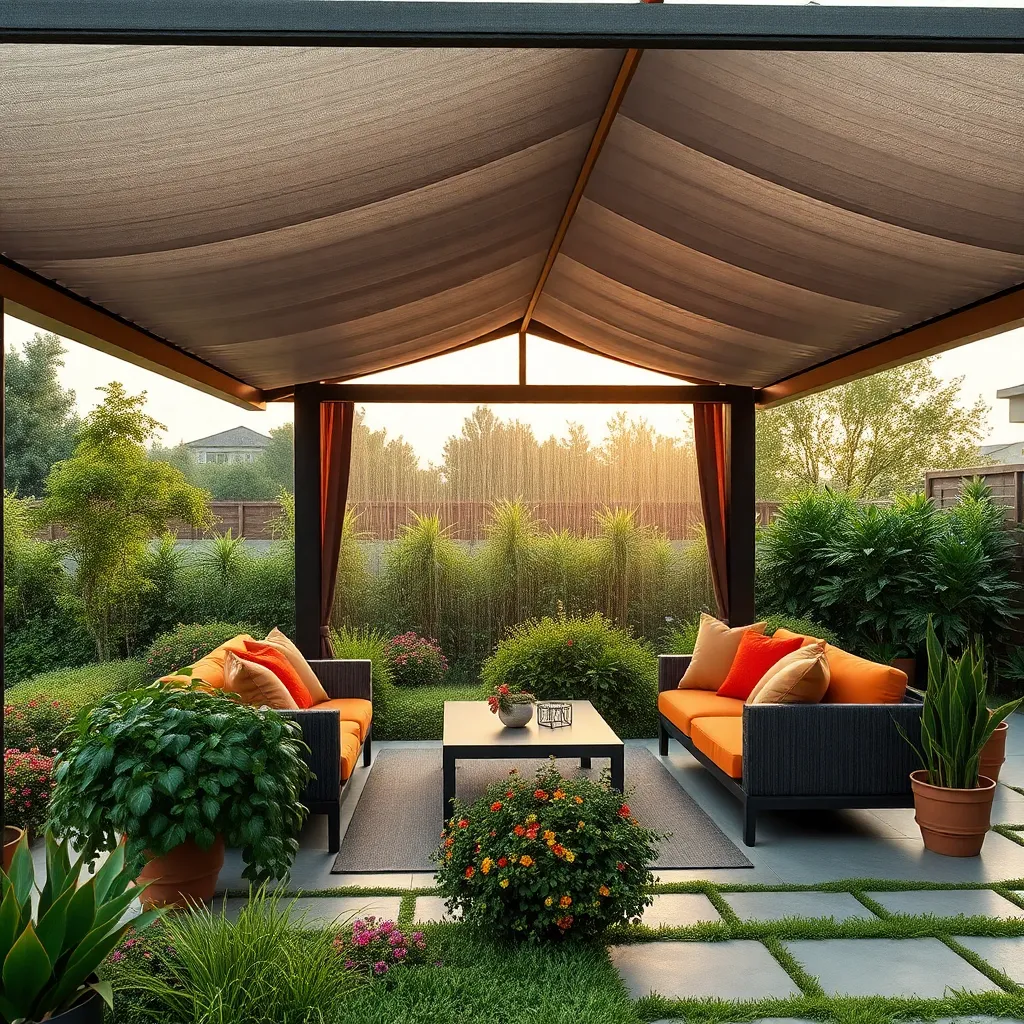
Incorporating waterproof fabrics and textiles into your patio design can transform your outdoor space into a comfortable retreat, even during rainy days. Consider using materials like *acrylic-coated polyester* or *PVC-coated canvas*, which are both durable and resistant to moisture. These materials can be used for patio covers, curtains, or even outdoor furniture upholstery to ensure everything stays dry. For beginners, start with simple rain curtains that can be easily rolled up when not in use, while more experienced DIYers might explore creating custom-fitted waterproof covers for their patio furniture.
When selecting waterproof textiles, focus on both functionality and aesthetics to complement your patio design. Opt for fabrics with UV protection to prevent fading and ensure longevity. Advanced users can experiment with layering textiles, such as adding a canopy of waterproof material over a pergola for added weather protection. Here are a few tips to keep in mind:
- Choose fabrics with a high denier count for better durability.
- Look for seams that are heat-sealed or taped to prevent leaks.
- Consider integrating grommets or ties for secure fastening on windy days.
By integrating these elements, you’ll create a stylish and practical outdoor space that stands up to the elements.
Creating Seamless Indoor-Outdoor Transitions
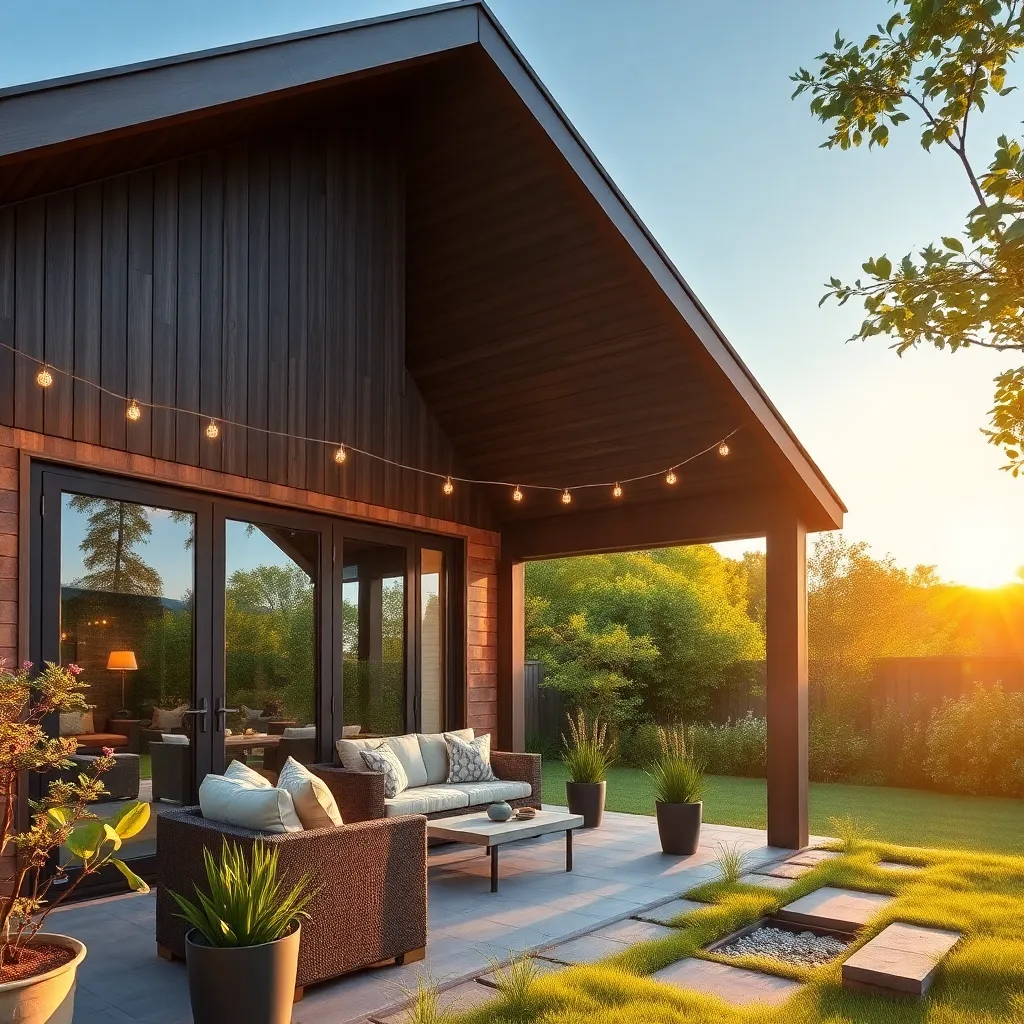
To create seamless indoor-outdoor transitions, consider using large sliding or folding glass doors that open up your living space to the patio. These doors not only allow for a smooth flow between the indoors and outdoors but also provide an unobstructed view, enhancing the sense of openness. Choose materials such as aluminum or vinyl for durability and weather resistance, and ensure the doors are properly sealed to prevent leaks during rainy days.
Another effective strategy is to extend your interior flooring material to the patio area. This creates a visual continuity that blurs the lines between indoor and outdoor spaces. For durability, opt for materials like porcelain tiles or treated wood that can withstand both foot traffic and weather conditions. Additionally, consider installing a covered walkway or pergola that connects directly from your home to the patio, offering shelter and a cohesive design element that encourages usage regardless of the weather.
Installing Gutter Systems for Drainage
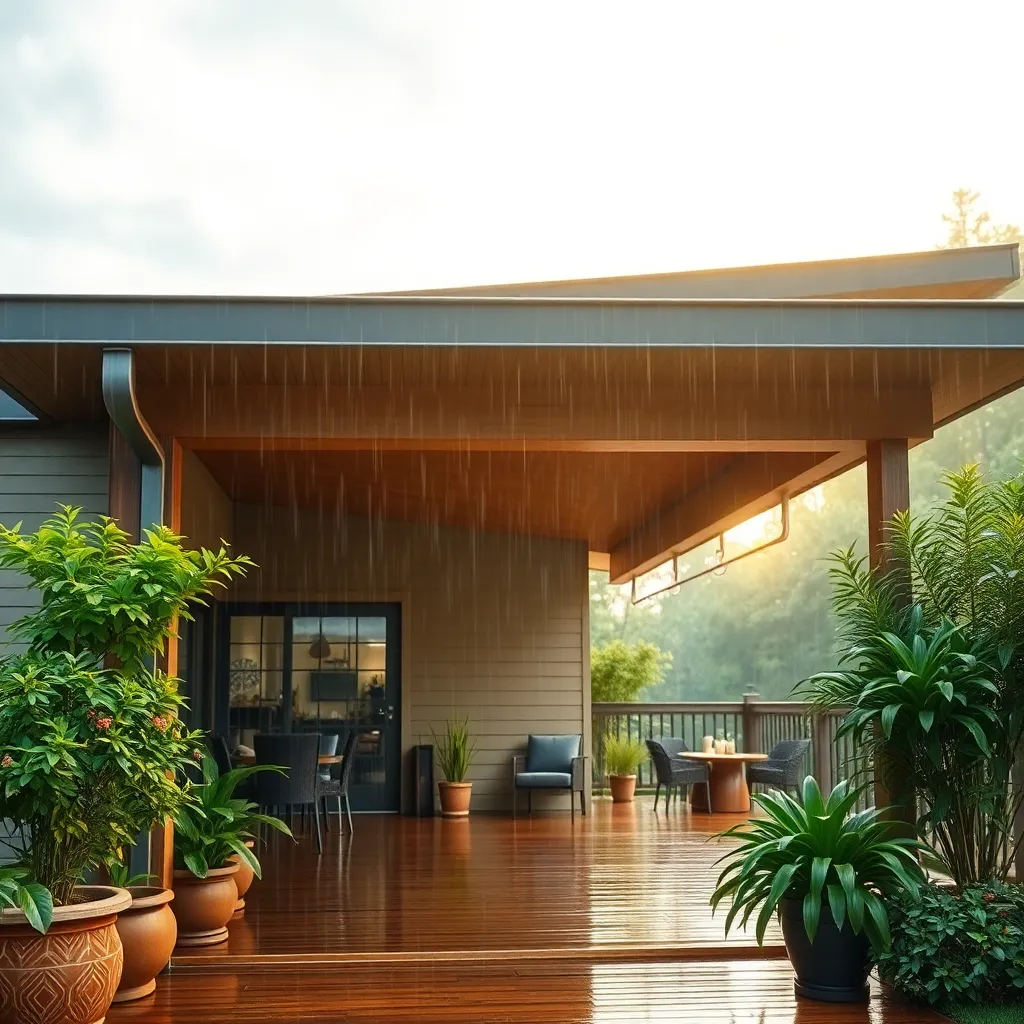
When designing a covered patio for rainy days, installing a gutter system is essential to manage water runoff effectively. Start by choosing materials that match your patio’s style; popular options include aluminum for its durability and affordability, or copper for a more upscale look. Ensure gutters are sloped correctly, typically a quarter inch per 10 feet, to direct water flow efficiently. For beginners, pre-made gutter kits can simplify installation, while experienced DIYers might opt for custom solutions to better integrate with unique patio designs.
Advanced installations might include leaf guards to minimize maintenance or rain chains for an aesthetically pleasing alternative to traditional downspouts. Consider integrating a rain barrel at the end of your gutter system to collect runoff for garden watering, promoting sustainability. Properly installed gutters will protect your patio and surrounding landscape from water damage, making your outdoor space more enjoyable even during wet weather. Remember to regularly check and clean your gutters to ensure they function effectively, especially during heavy rain seasons.
Customizing Space With Flexible Walls
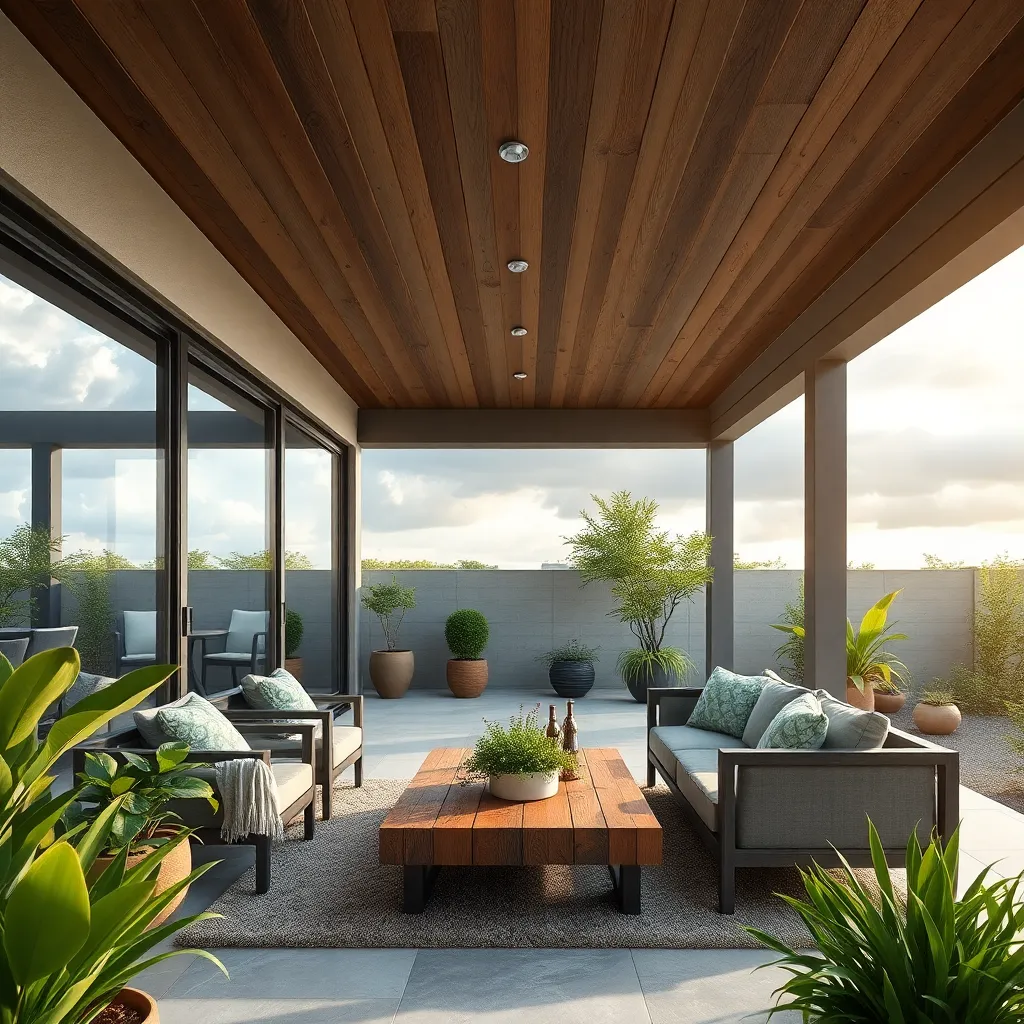
Creating a versatile patio space is easier than you think with the use of flexible walls. Retractable screens or sliding glass panels can be installed to provide protection from the rain while allowing you to enjoy an open-air feel when the weather cooperates. For beginners, consider starting with simple, weather-resistant fabric panels that can be easily attached to existing structures; these are cost-effective and offer quick adjustments to your patio’s enclosure.
Experienced builders might explore more advanced options like motorized retractable walls, which offer seamless transitions between indoor and outdoor settings. These systems can be customized with various materials such as tempered glass or acrylic, providing durability and a sleek look. When planning, ensure that the tracks and frames are made from rust-resistant materials like aluminum to withstand the elements. Keep in mind that precise measurements are crucial for a snug fit, so consider consulting with a professional to maximize both functionality and aesthetic appeal.
Enhancing Ambiance With Outdoor Lighting
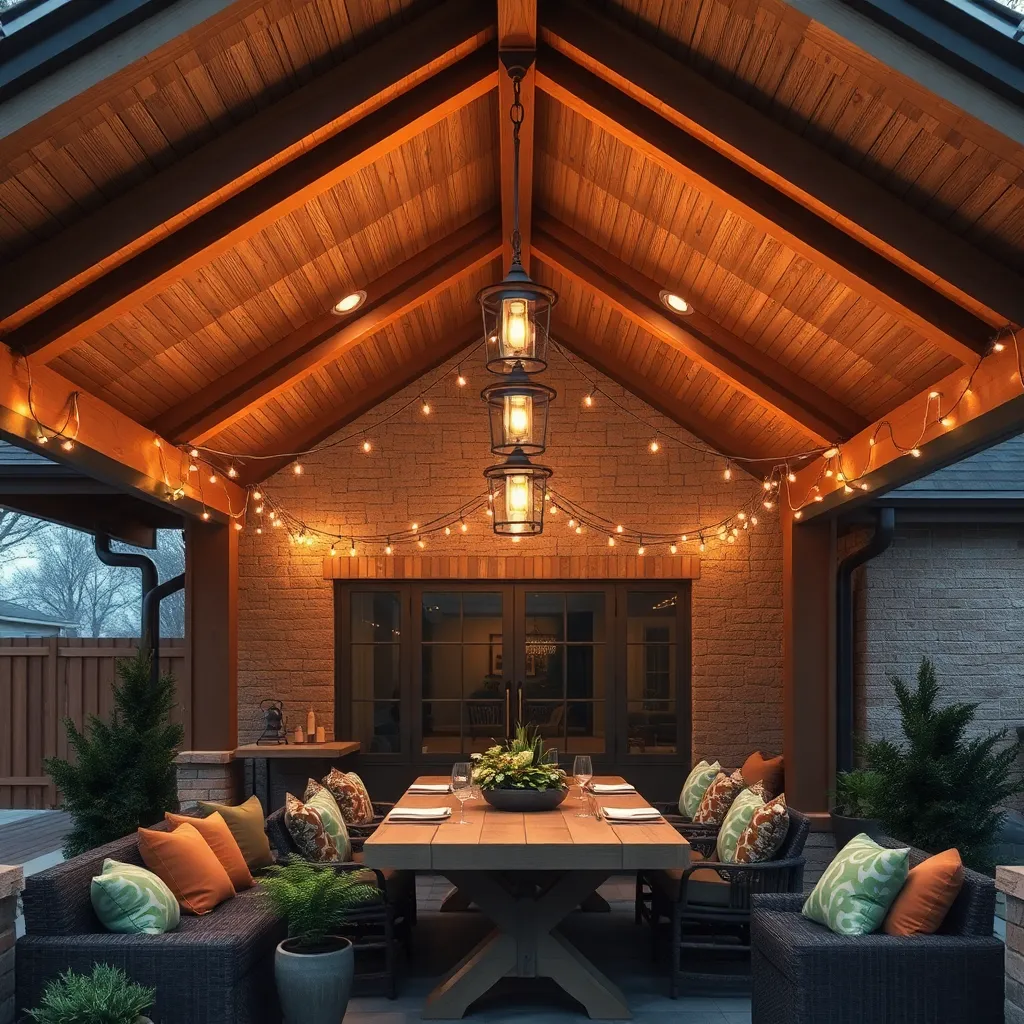
Incorporating outdoor lighting can dramatically enhance the ambiance of your covered patio, making it an inviting retreat even on rainy days. Start by choosing the right type of lighting fixtures, such as LED string lights or lanterns, which are both energy-efficient and weather-resistant. For a cozy glow, drape string lights across beams or wrap them around railings, while lanterns can be placed strategically on tables or hung from hooks.
For those looking to add a touch of sophistication, consider installing recessed lighting in the patio ceiling. This provides a sleek and modern look while ensuring the space is well-lit. Advanced gardeners might explore smart lighting options, allowing you to control brightness and color with a smartphone app. Always use outdoor-rated fixtures and bulbs to withstand the elements, ensuring longevity and safety. By thoughtfully integrating these lighting elements, you can create a warm and welcoming atmosphere that beckons you to enjoy your patio regardless of the weather.
Maximizing Space With Built-In Seating
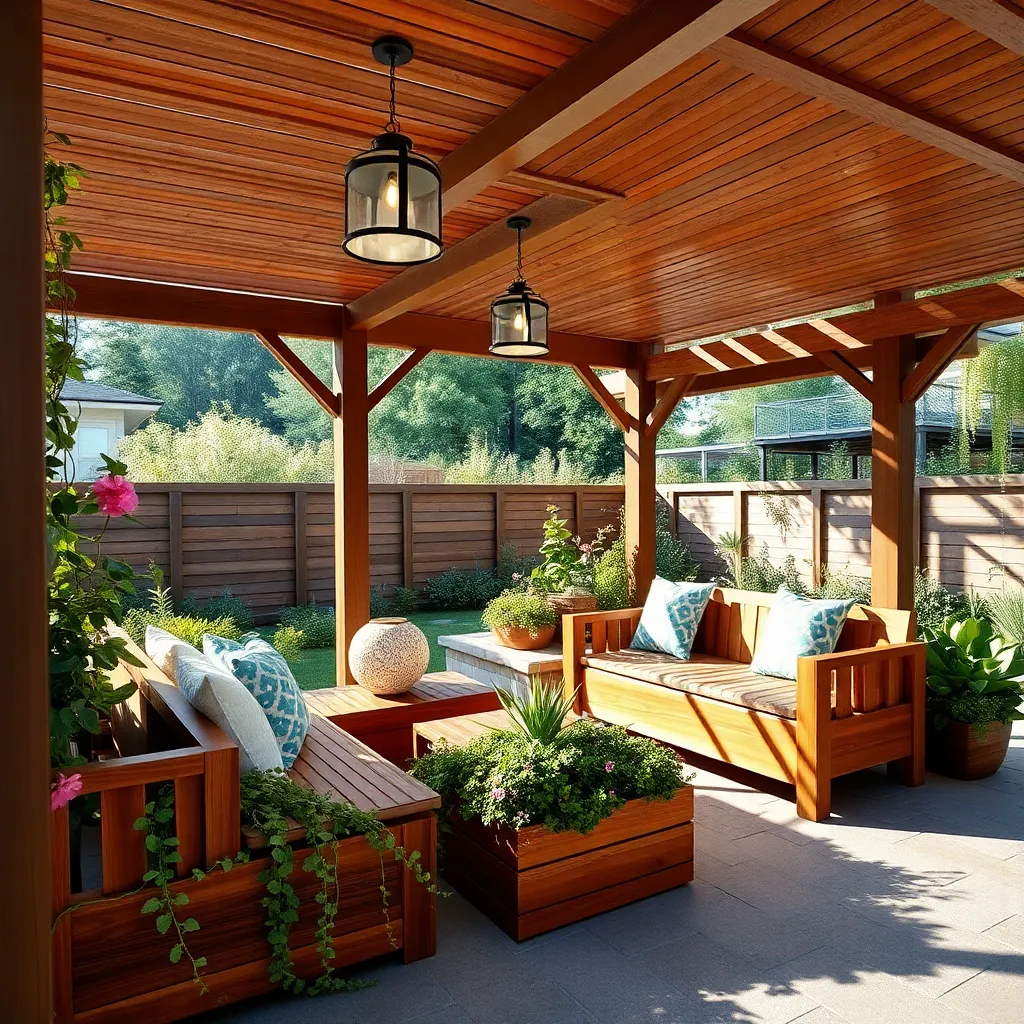
Integrating built-in seating into your covered patio can significantly maximize space while adding functionality and style. Consider using weather-resistant materials like teak, cedar, or treated pine for durability and longevity. Design benches with storage compartments underneath to keep outdoor essentials like cushions and blankets dry and easily accessible. For beginners, starting with a simple rectangular bench with a hinged top is a manageable project, whereas experienced DIYers might explore more complex L-shaped seating to utilize corner spaces efficiently.
To ensure your built-in seating is both practical and comfortable, focus on dimensions and ergonomics. Keep the seat height around 18 inches and the depth between 15 to 18 inches, which is a standard size for comfortable seating. Adding a slight backward tilt to the backrest can enhance comfort. For advanced builders, incorporating elements like integrated planters or side tables can elevate the design, providing a seamless blend of nature and functionality. Remember to treat and seal wood properly to protect against the elements and maintain the aesthetic appeal of your outdoor space.
Selecting Weatherproof Furniture Options
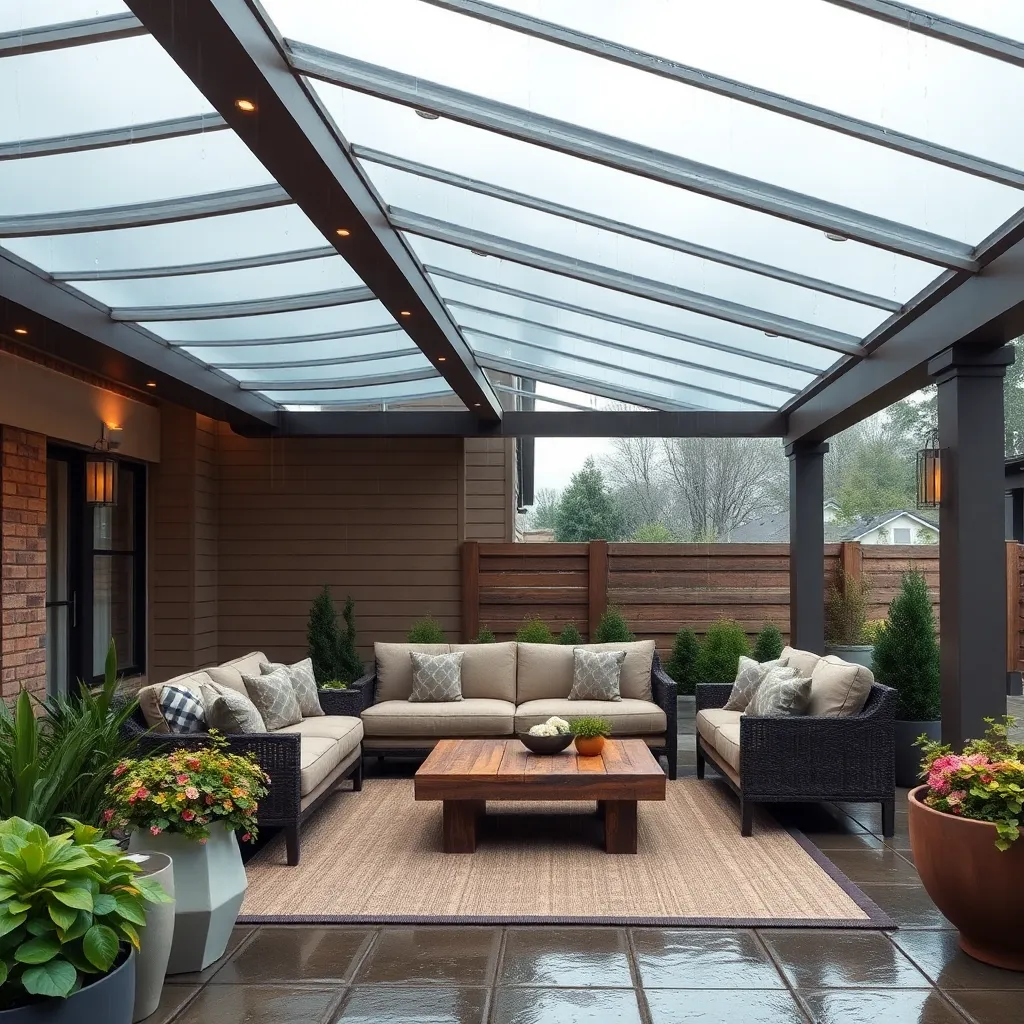
Choosing weatherproof furniture for your covered patio is essential to ensure durability and comfort. Opt for materials like teak, aluminum, or high-density polyethylene (HDPE), which are known for their resistance to rain and humidity. For cushions, consider fabrics such as Sunbrella or Olefin, which are both water-resistant and fade-resistant, providing long-lasting style and function.
For a more advanced setup, incorporate modular furniture that can be easily rearranged to adapt to different occasions or weather conditions. Look for pieces with removable covers for easy cleaning and maintenance. To add a touch of elegance, consider accent pieces like weatherproof planters or side tables made from composite materials that mimic natural stone. These elements not only enhance aesthetics but also ensure your furniture remains in pristine condition, rain or shine.
Incorporating Heating Elements for Comfort

To create a cozy and inviting atmosphere on your covered patio during rainy days, consider incorporating heating elements. Freestanding patio heaters are a popular choice, offering flexibility as they can be moved wherever warmth is needed. For a more integrated solution, think about installing ceiling-mounted infrared heaters, which efficiently radiate heat downward, warming the space without taking up floor space. Always ensure that your chosen heaters are rated for outdoor use and positioned safely away from any flammable materials.
For those seeking a more permanent and aesthetic solution, consider adding a built-in fireplace or fire pit, which not only provides warmth but also serves as a stunning focal point. When planning this feature, use durable materials like stone or brick that can withstand the elements and complement your patio’s design. Advanced DIYers might enjoy the challenge of constructing a custom fire feature, while beginners can opt for a professionally installed unit for ease and safety. Remember to comply with local regulations regarding outdoor fire features to ensure a safe and enjoyable experience.
Maintaining Privacy With Vertical Gardens
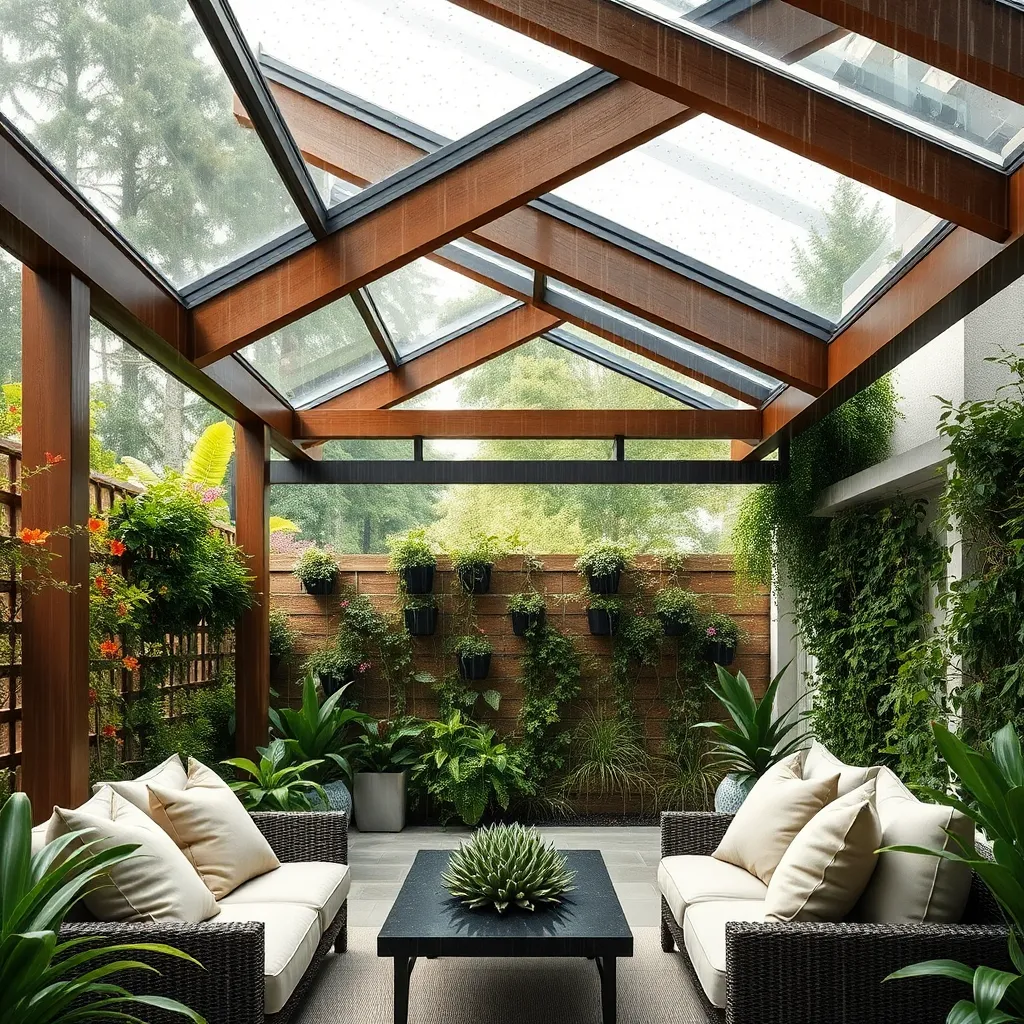
To maintain privacy on your patio while enjoying the beauty of a garden, consider installing a vertical garden. These living walls not only provide an attractive natural barrier but also maximize space. Utilize sturdy materials like weather-resistant wood or metal frames to support the plants, ensuring they withstand various weather conditions. For a simple start, select easy-to-grow plants such as ferns or ivy, which thrive in vertical arrangements and provide lush, dense coverage.
For those ready to take it a step further, integrate a self-watering system to reduce maintenance. Drip irrigation is a great option, keeping plants hydrated without excess water waste.
- Use lightweight planters to avoid overloading the structure, especially if attaching to existing walls.
- Consider a mix of herbs, flowers, and ornamental grasses to add variety and texture.
This setup not only enhances privacy but also brings a touch of nature to your outdoor space, making it a tranquil retreat even on rainy days.
Exploring Eco-Friendly Roofing Solutions
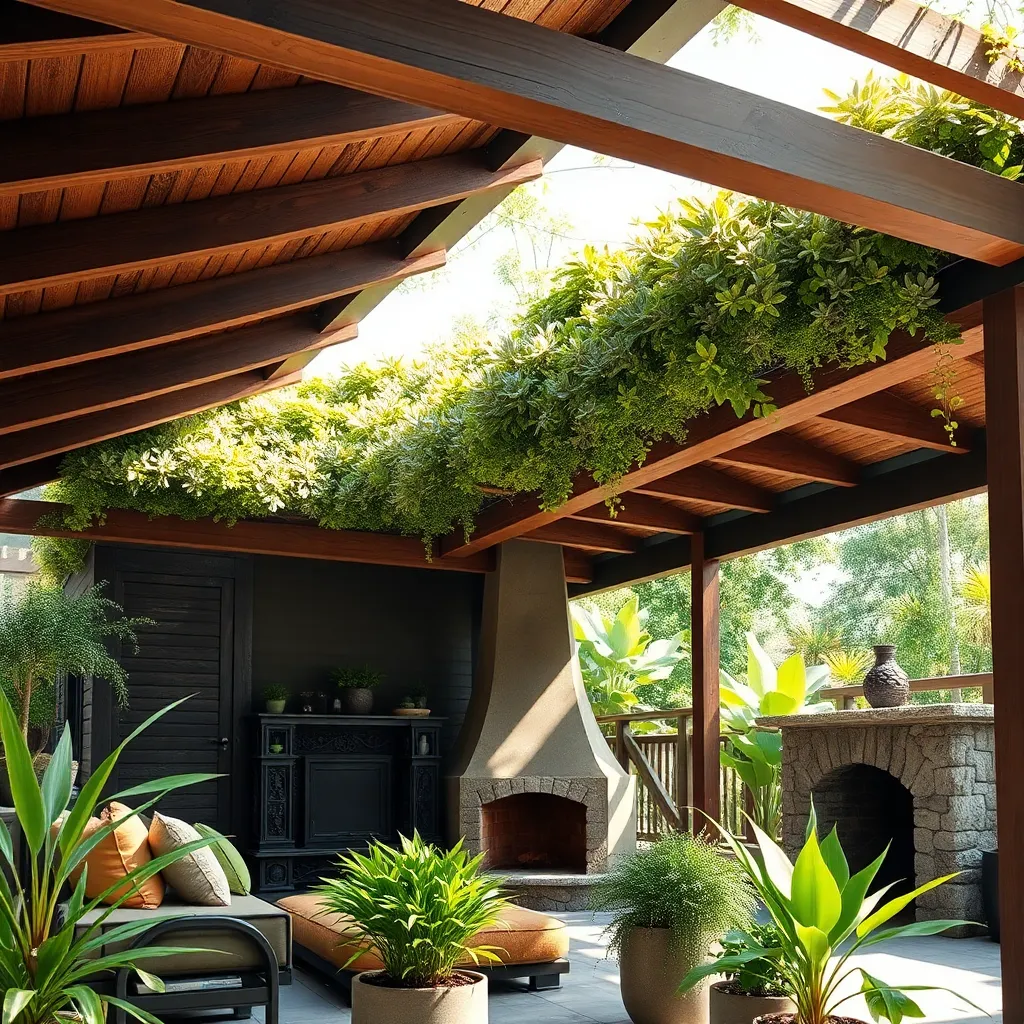
When designing an eco-friendly roof for your covered patio, consider using recycled metal roofing materials. This option not only reduces waste but also provides excellent durability and resistance against harsh weather conditions. For a more natural aesthetic, explore living roofs using drought-resistant plants, which offer superior insulation and can help manage rainwater runoff. Both options are not only sustainable but also add unique visual appeal to your outdoor space.
Incorporating solar panels into your roofing design can further enhance the eco-friendliness of your patio cover. Solar panels can be integrated seamlessly, providing a renewable energy source to power outdoor lighting or heating elements. If you’re looking for a simpler solution, opt for corrugated polycarbonate panels that allow natural light to filter through while protecting against rain. Ensure a slight slope for effective water drainage, and explore various color options to match your existing outdoor decor.
Conclusion: Creating Beautiful Outdoor Spaces
In exploring the ’15 Covered Patio Designs for Rainy Days,’ we’ve unveiled a diverse array of relationship concepts that mirror the creativity and adaptability of patio designs. From nurturing open communication to fostering emotional intimacy, each concept is akin to a unique patio design that shelters love through life’s storms. We’ve discussed the importance of setting boundaries, prioritizing quality time, practicing forgiveness, and embracing vulnerability. Just like a well-designed patio, these principles provide a sturdy foundation for your relationship, ensuring it thrives even in challenging times.
As a practical next step, choose one of these concepts to focus on this week. Perhaps prioritize quality time by planning a cozy indoor picnic with your partner, or practice forgiveness by letting go of a past grievance.
Bookmark this article to revisit these insights and let it serve as your guide to nurturing a resilient relationship. Remember, by embracing these concepts, you are investing in a future where love is celebrated and strengthened, regardless of the weather. Here’s to building relationships that are as enduring and beautiful as the most thoughtfully designed patios!


